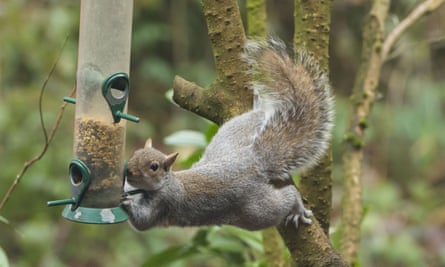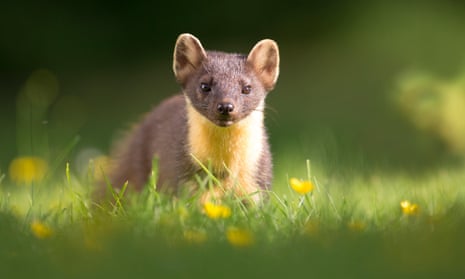Hopes that the resurgent predatory pine marten might “biologically control” grey squirrels and benefit the UK’s native red squirrels have been dashed by a new study, which found pine martens avoided urban areas.
Researchers from Queen’s University, Belfast, suggested that even if greys were driven out of rural areas, their populations would be constantly replenished from cities, where they thrived.
The lead author of the research, Joshua Twining, of Queen’s University Belfast, said: “As the pine marten does not occupy urban areas anywhere within its European range, it is not likely to be the sole solution to the invasive grey squirrel. If action is not taken to support the pine marten in the long run, we may see a reversal of their current success and doom our native red squirrels.”

Earlier studies in Scotland, Wales and Northern Ireland discovered that the pine marten created “a landscape of fear” for the grey squirrel, and drove away populations. Although pine martens, which almost became extinct during the 20th century, will also kill red squirrels, the smaller native squirrel has evolved and adapted to survive alongside the marten for thousands of years.
Grey squirrels were introduced into Britain and then Ireland in the 19th century from North America. The larger, heavier animals outcompete reds but also carry and spread squirrelpox, which does not affect greys but is rapidly fatal to reds.
The Belfast study used camera traps operated by citizen scientists at 332 sites across Northern Ireland in both urban and rural areas to measure pine martens and red and grey squirrels. Models were then used to predict the future distribution of the three species.
The results revealed that pine martens were deciduous woodland specialists, less numerous in non-native coniferous plantations, and displayed a strong aversion to busy urban areas. The study, published in the Journal of Applied Ecology, expected grey squirrels to persist in parkland areas of towns and cities.
Twining said: “The ability of the pine marten to control the grey squirrel and help red squirrel recovery in Ireland and Britain is limited by three things: its ongoing recovery, the lack of forest cover on the islands and the presence of urban refugia.”

The researchers warn that these “refuges” are likely to buy the grey squirrel population enough time to develop novel genotypes which will allow it more successfully to evade the pine marten with anti-predator behaviours. Other studies have found that species can develop anti-predator responses to novel predators within a few generations.
The study found this could enable grey squirrels to recolonise woodland landscapes dominated by the pine marten in parts of Ireland and Scotland and continue to displace red squirrels, and drive them to the brink of extinction.
The study argued that control of urban grey squirrels was required alongside native woodland afforestation, which would increase marten populations and their ability to control greys and help reds recover. Ireland and Britain are among the least forested countries in Europe.
